Choosing between magnetic hooks vs Command hooks depends on your needs for strength, surface type, and ease of use. This guide will help you decide which type of hook is best for your specific requirements.
Key Takeaways Magnetic Hooks vs Command Strips
- Magnetic hooks are highly durable, versatile, and capable of supporting heavier weights, making them suitable for various environments, especially metal surfaces.
- There are weight limitations for both traditional neodymium magnetic and adhesive hooks.
- There is a new, revolutionary magnetic technology from Gator Magnetics, that is changing the way magnetic hooks work and now provide a tremendous shear weight holding capacity making hanging heavier tools and items possible as never before.
- Command hooks are convenient for lightweight items on non-metal surfaces but have lower weight capacities and shorter lifespans due to adhesive degradation.
- While magnetic hooks may have a higher initial cost, they provide long-term savings through reusability, whereas adhesive hooks may seem affordable but incur ongoing replacement costs.
Understanding Magnetic Hooks
Traditional magnetic hooks are designed to attach securely to metal surfaces, primarily ferromagnetic materials such as steel or iron. These hooks are known for their high weight capacity claims, making them a choice for hanging heavier items. From a user experience perspective however, the traditional magnetic hook weight capacity claims compared to how the magnetic hook actually performs, is inconsistent.
Strong Magnetic Hooks: The Magnetic Industry's Little Secret
When it comes to strength, magnetic hooks can be unparalleled. Most consumer magnetic hooks, however, make packaging claims that they are capable of supporting up to 50 – 100 pounds on thick metal surfaces, making them suitable for heavy-duty applications. So, why is it that a traditional magnetic hook that claims on its packaging that it supports 50 lbs. will slide down a vertical steel surface as it fails to hold the weights claimed or even less weight than claimed?
Most people, when they read 'Holds 50 lbs.,’ assume the hook can easily hold 50 lbs in the way they'd naturally hang things—on a vertical surface. But the truth is, those weight claims refer to a very different measurement.
The answer can be found on the back of the packaging in small print: “Holding strength is measured by pull strength on thick steel surfaces.” When magnetic hook weight capacity claims are made for a regular neodymium magnetic hook, they are touting pull force weight, which means the amount of force it takes to pull the magnet directly off at least a ½” + thick steel surface.
There are several major challenges with this little-known fact:
- An overhead ½” + thick steel beam is seldom found in homes or accessible in garages or workshops. Most available steel surfaces will be thin steel, found on steel doors, steel cabinets, toolboxes, racks or steel walls.
- For a hook to function properly to hang an item, we generally want it to hang on a vertical surface, perpendicular to the floor, at a right angle, not vertically from above.
- When a regular neodymium magnetic hook has claims that it holds 45 lbs. of pull force, that will often be equal to less than a 9 lb. capacity for its shear force which is explained in more detail below.
This has resulted in a common belief that magnetic hooks don’t work as a hook should for hanging heavier items.
There is a new, revolutionary magnetic technology that has changed how magnetic hooks work.
Instead of measuring pull force on thick steel surfaces, there is a new patented magnetic technology from this company; Gator Magnetics, that measures shear force on thin steel surfaces. Shear force is the amount of weight the hook can hold in a downward direction, towards the floor.
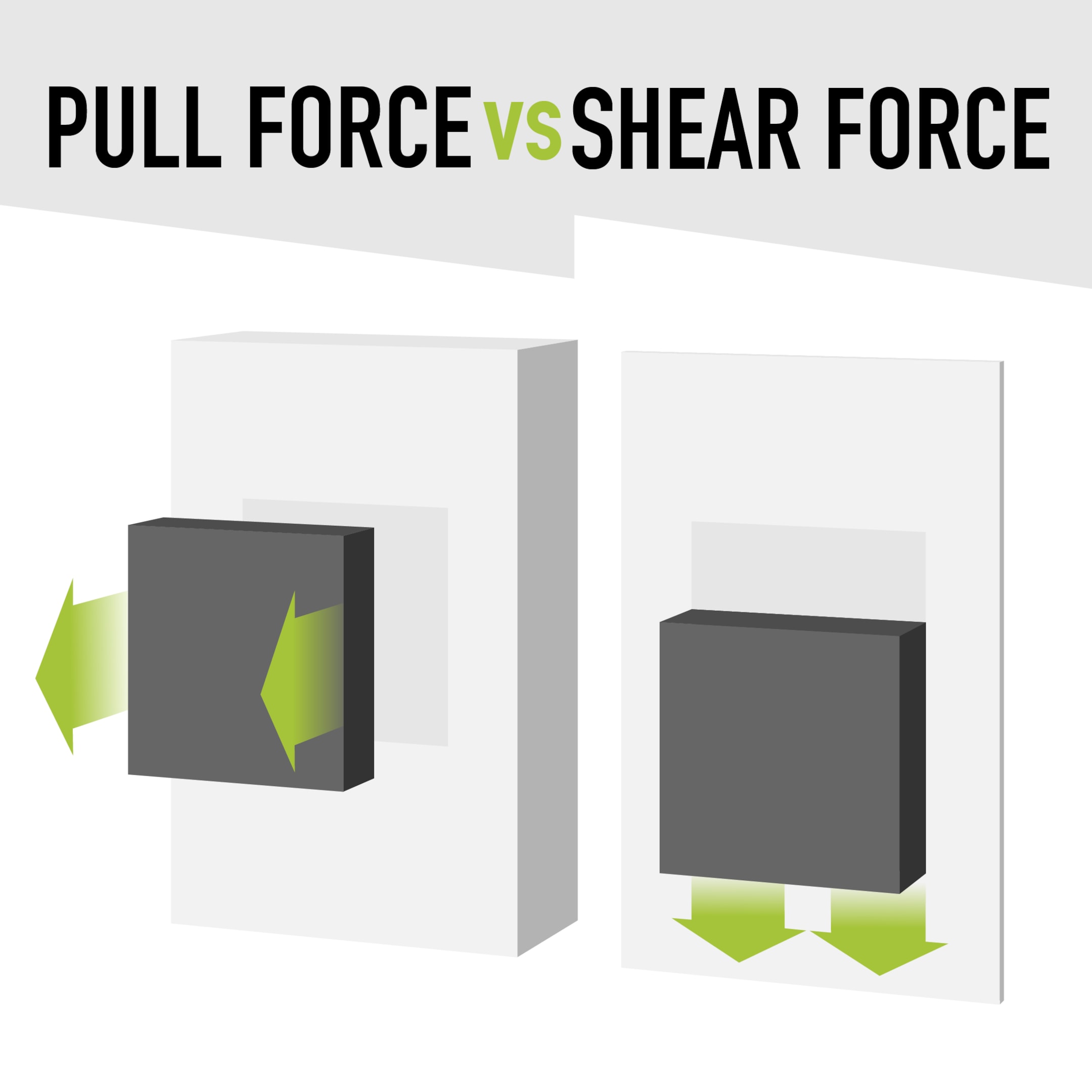
Gator Magnetics patented “Maxel” technology and easy release lever system is designed and optimized to provide incredible shear force holding power, which is revolutionizing the magnetic storage and organization industry. Their unheard-of gripping strength can now be used to hold the heaviest of items…up to 45 lbs. of shear force on thin steel surfaces.
With Gator Magnetics, you don’t have to worry about not having thick steel beams or positioning the hook perfectly to make it work. Their Maxel technology is designed to work on everyday surfaces like the steel doors, cabinets and toolboxes that you actually have.
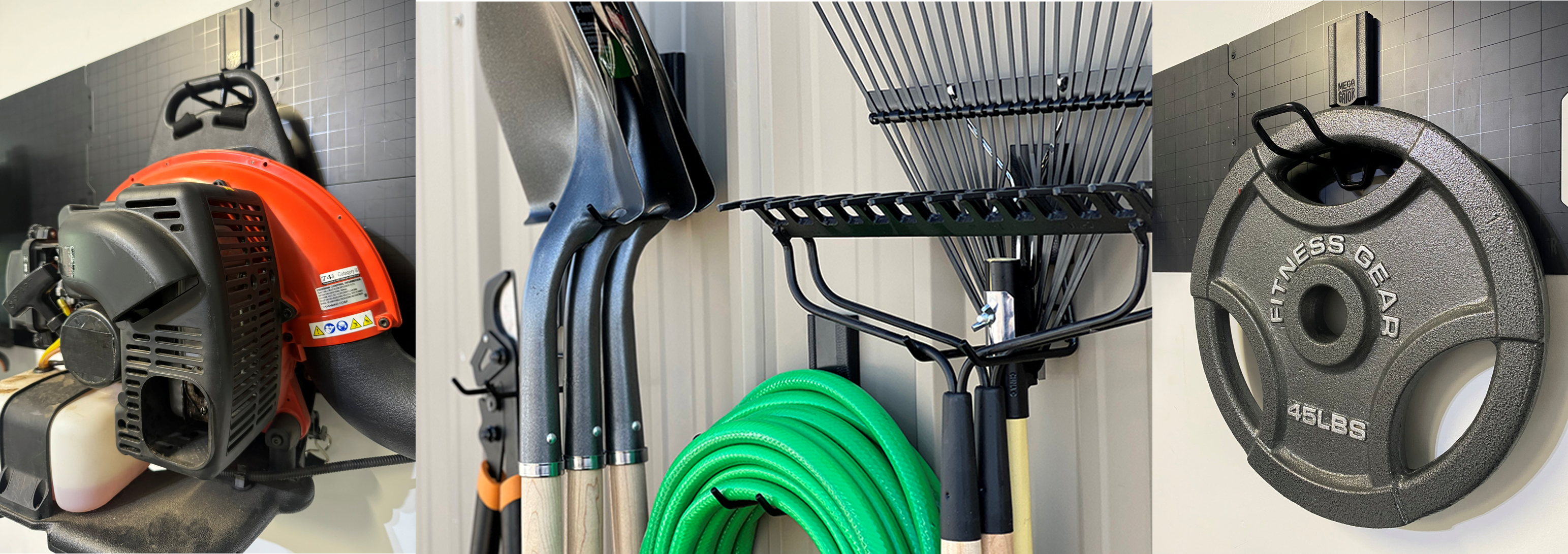
Science Meets Magnetic Hooks
Traditional neodymium magnets have north and south poles on opposite sides of the magnet creating a large looping magnetic field that loses energy as it passes through a thin steel surface and is inefficient.
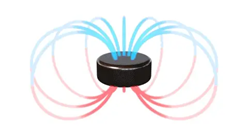
The Gator Magnetics technology programs north and south pole dots, called “Maxels” in specifically designed and proprietary patterns creating many shorter magnetic fields that interact, engage, and grip, with incredible load capacities to thin steel surfaces. All this makes the Gator magnet "hook system" much more efficient to adhere to common thin steel surfaces found in homes and garages and creates an exponentially stronger shear force than traditional magnets.
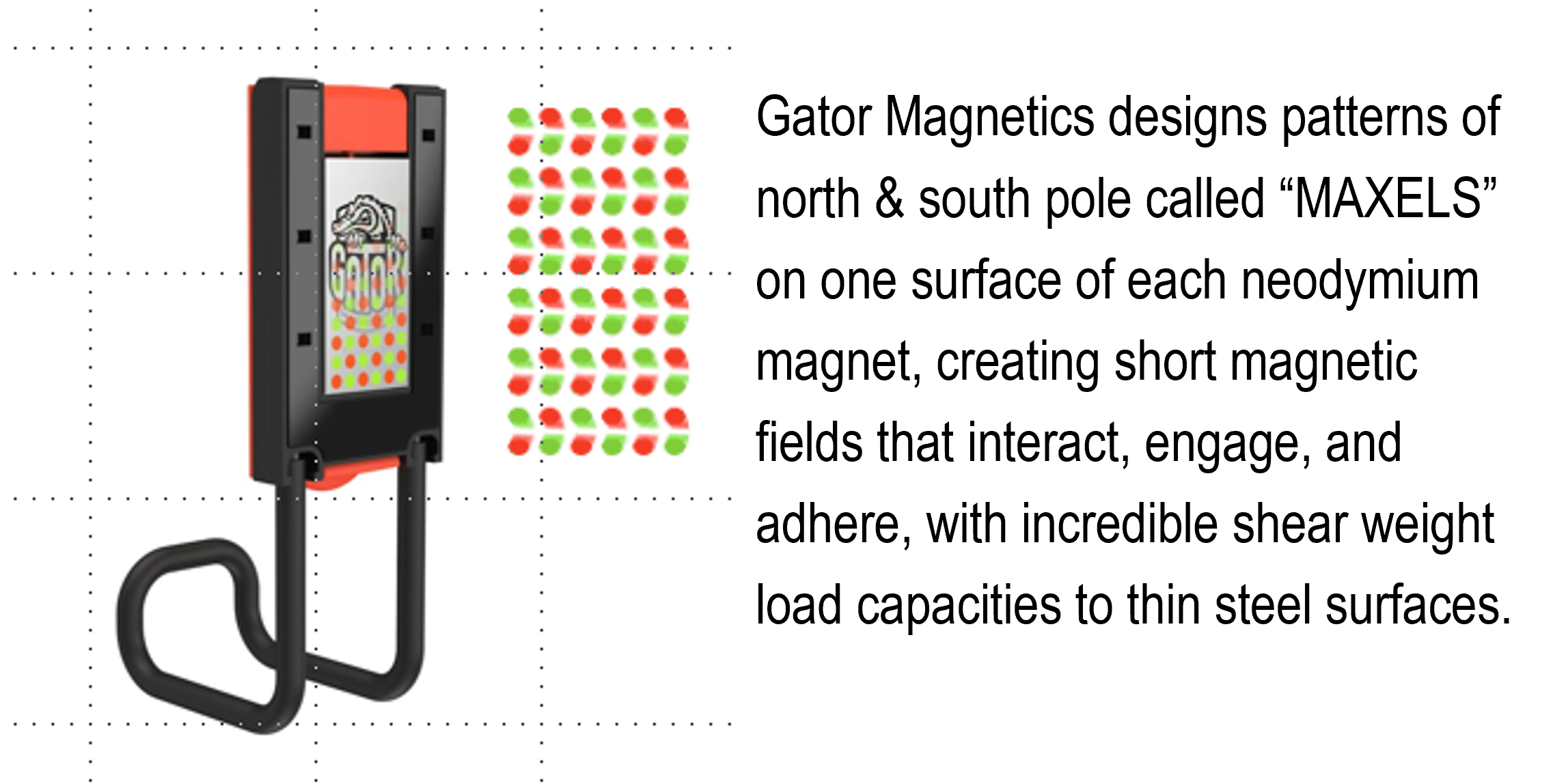
All of Gator Magnetics patented components: the chassis, the programmed magnet and patterns of Maxels, the hook, and the easy release lever mechanism, all function together, delivering its shear force gripping power. A Gator Magnetic Hook can be easily moved repeatedly with no damage to the steel surface it's on.
Why Magnetic Shear force vs. Pull Force Matters.
To equate pull force to shear force for a magnetic hook, we need to understand that pull force and shear force are two different ways of measuring a magnet’s holding power:
Pull force is the force required to pull the magnet directly away from a steel surface (perpendicular force). Pull Force: The maximum load the magnet can hold in a straight vertical direction, i.e., lifting weight directly off the steel.
Shear force is the force required to slide the magnet across or downward on the steel surface. The downward force, towards the floor when hanging on a wall, is how a hook should be measured for its weight holding effectiveness. Shear Force is The force it takes to slide the magnet downward on a steel surface.
It is because the magnetic industry measures pull force, not shear force, is why a magnetic hook may claim to hold 45 lbs. vertically but may only hold less than 9 lbs. when force is applied downward.
Versatility of Traditional Magnetic Hooks: Use Caution
Traditional magnetic hooks are extremely versatile, suitable for a wide range of environments, from homes and offices to industrial settings. They are particularly useful for organizing spaces by hanging lighter tools, kitchen utensils, and even artwork. This versatility makes them a valuable addition to any space where organization and efficiency are priorities.
However, if hanging heavier items in your garage, kitchen, or office, magnetic hooks don’t offer a reliable solution.
Gator Magnetics Offers a Superior Magnetic Storage Solution
Today, by using revolutionary Gator Magnetics technology, the limitations or concerns about hanging your heaviest items or tools without sliding down a steel surface are gone.

Command Strips
Command strips hold between 1 to 16 pounds, depending on type and size, making them ideal for lighter items like picture frames, small mirrors, and decorations. Command offers many hook configurations focused on items that weigh less than 10 lbs. However, they also offer larger Command hooks capable of holding and item that weights up to 16 pounds.
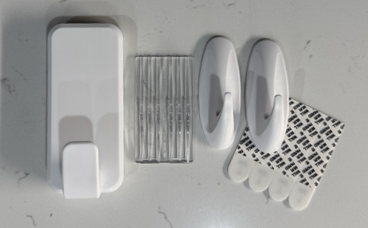
Available in small, medium, and large sizes, command strips allow you to choose the appropriate one based on the item’s weight. Their versatility lies in securely holding items as a go-to for quick, lightweight hanging solution for homeowners and apartment dwellers.
Advantages of Command Hooks:
- Versatility: Can be used on almost any smooth surface.
- Lightweight Champions: Ideal for hanging keys, small picture frames, or decorations.
- No Tools Required: Installation is simple, requiring no screws or nails.
Disadvantages of Command Hooks:
- Limitations for how much weight they can hold
- Require reapplication of adhesive strip to use again
- Requires some effort to remove
- May often leave residue or damages wall finish when removing
- Environmental factors like humidity or cold can degrade the adhesive over time, leading to unexpected failures.
Surface Compatibility
Command hooks work best on smooth, clean surfaces. Their holding power diminishes on rough or uneven walls, and on porous materials, they might not adhere well at all. While practical for short-term or lightweight hanging needs, adhesive hooks lack the longevity and reliability of magnetic hooks.
Command strips adhere well to various surfaces, including painted walls, tiles, and glass, providing versatile placement options. This versatility allows them to accommodate diverse surface materials from wood to metal to laminated surfaces.
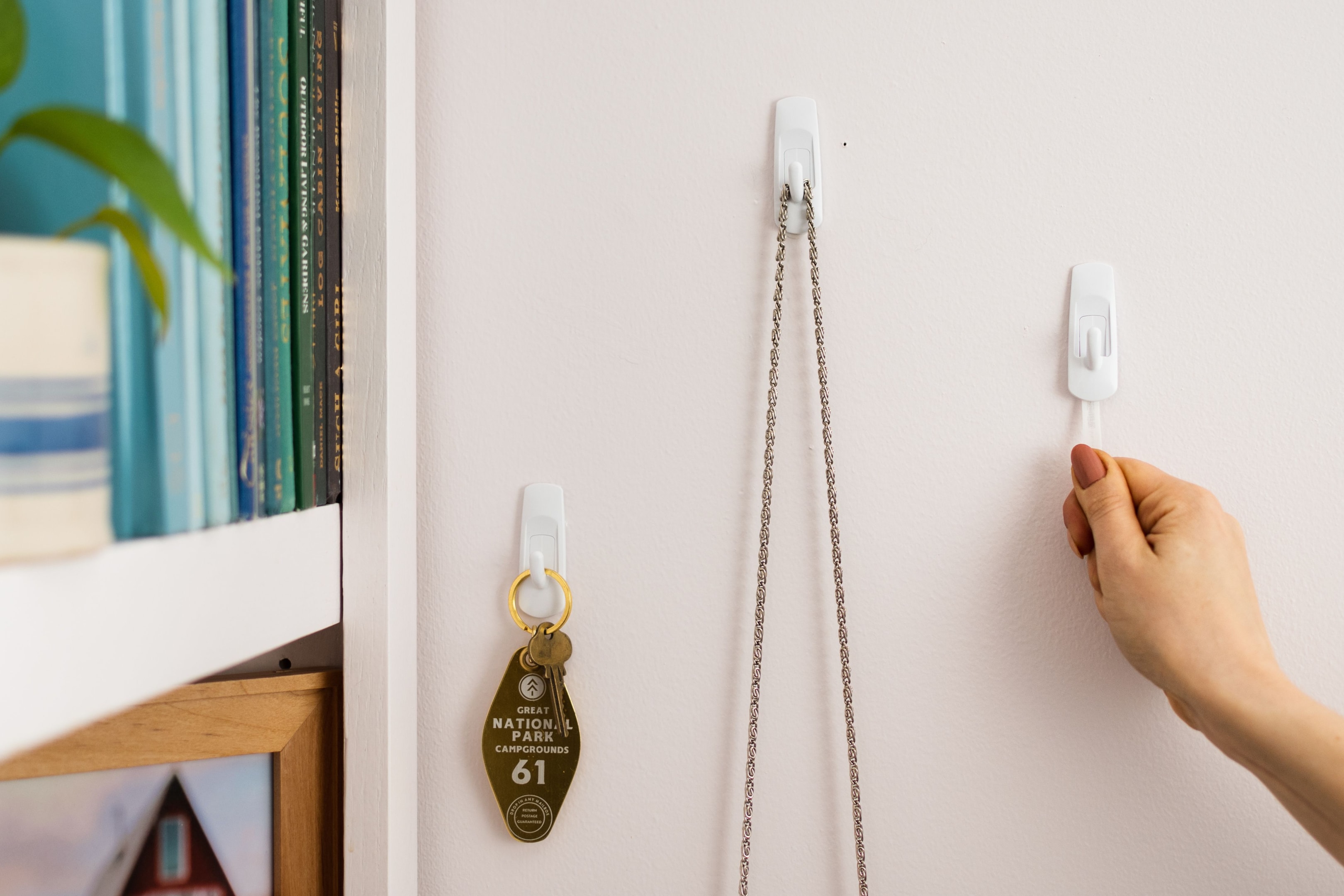
However, they are not suitable for delicate surfaces or freshly painted walls, as they can cause damage or fail to adhere properly. Applying them to clean, dry surfaces and removing them carefully by pulling slowly parallel to the wall reduces the risk of damage.
Comparing Weight Capacities and Flexibility
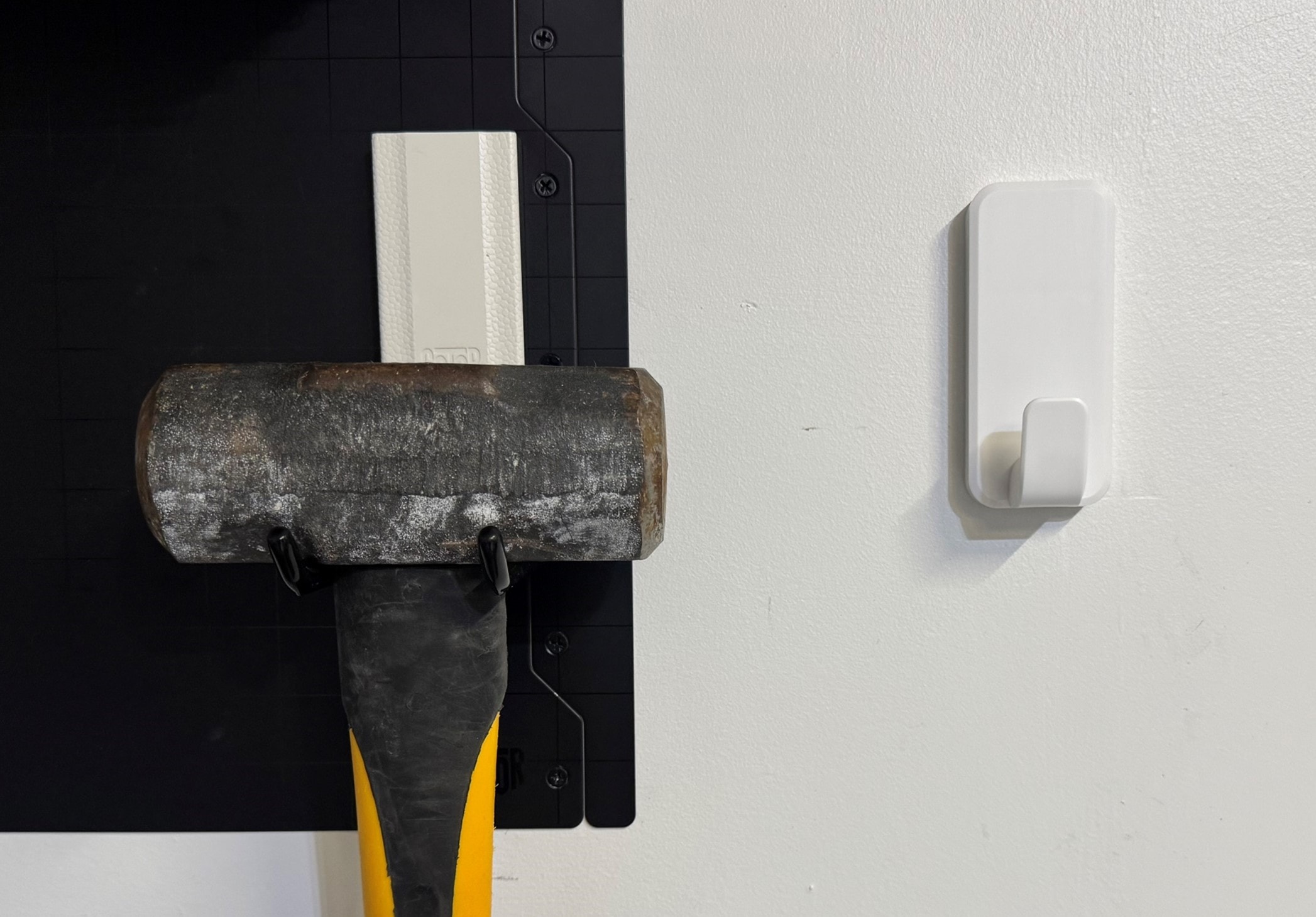
Magnetic Hooks: Heavy Duty Power
Gator Magnetics hooks outperform adhesive hooks by a wide margin on thin steel surfaces, supporting up to 45 lbs. of shear force on thin steel surfaces. Regular neodymium magnetic hooks claim higher weight capacities but are limited when used on thinner or vertically aligned surfaces.
Friction between the magnetic hook and the surface plays a critical role in its holding capability. Ensuring the surface is clean and smooth can help maximize their effectiveness.
Adhesive Hooks: Lightweight
Most adhesive strip hooks can hold between 1 and 5 lbs., with some heavy-duty versions supporting up to 16 lbs. However, adhesive degradation can cause these hooks to lose their grip over time, especially when exposed to humidity or temperature changes. This makes adhesive hooks less suitable for heavy or valuable items that require secure hanging. It is important to consider these limitations when choosing adhesive hooks for your hanging needs.
Adhesive hooks are also stationary. In order for these hooks to be moved requires they be removed, purchase more adhesive strips, and go through the steps to adhere to the wall again.
For optimal adhesion, surfaces should be cleaned and dried before applying command strips. This preparation ensures the strips stick properly and hold the intended weight. Removing any hanging hardware from the item before using command strips is also recommended.
Installation and Removal
Magnetic hooks are incredibly easy to install—just slap them on a metal surface. No drilling, no mess, and no surface damage. Plus, they’re reusable and can be repositioned as needed without leaving behind residue.
Adhesive hooks Surfaces must be clean and dry, and removing these hooks can leave behind sticky residue or even peel paint or wallpaper. Use caution when removing and carefully follow instructions.
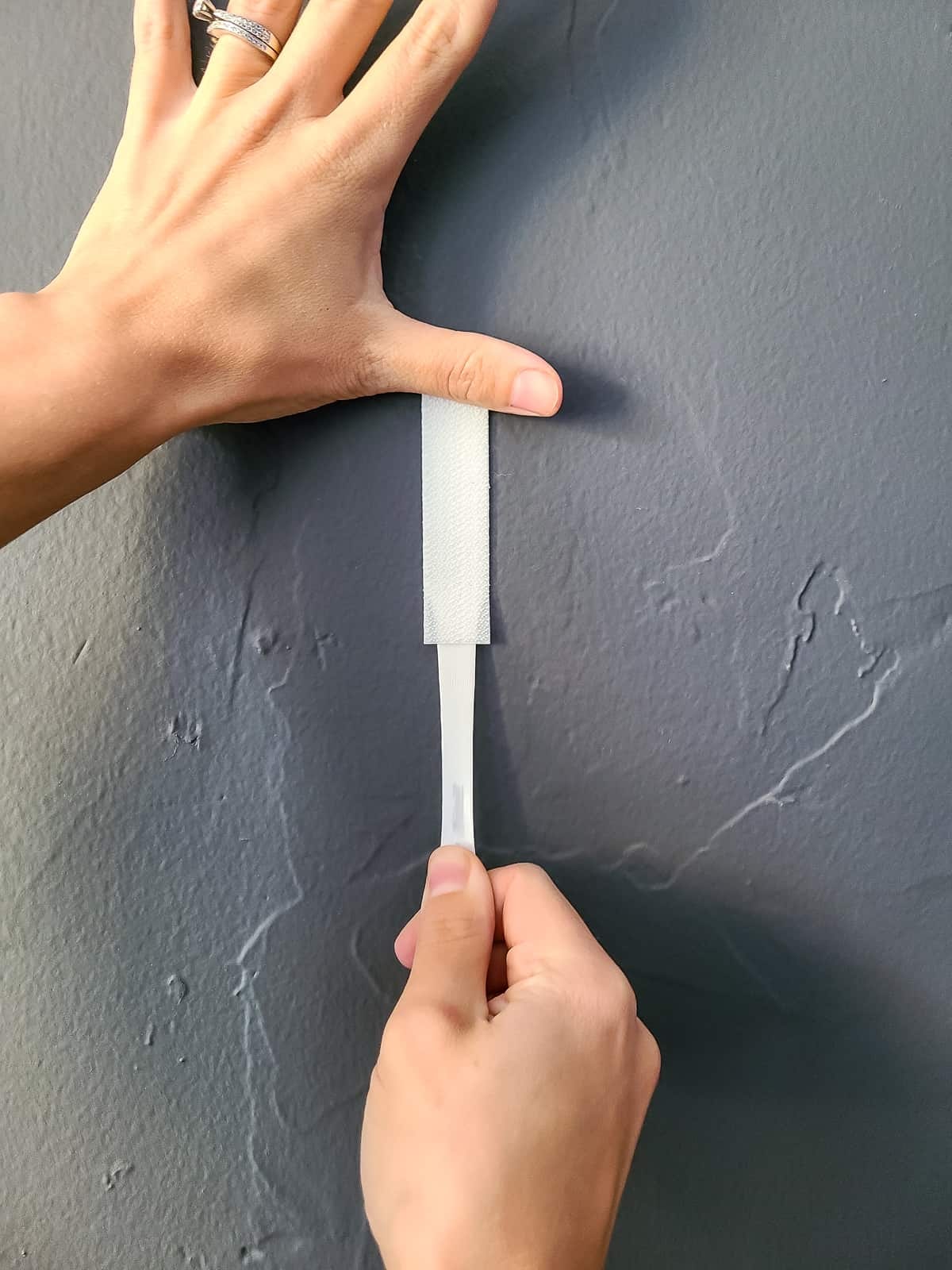
Versatility and Design Options

Versatility and design options play a significant role in choosing the right hooks or strips for your needs. Both magnetic hooks and Command strips offer various designs catering to different uses and preferences.
Magnetic Hooks
Magnetic hooks come in various designs and sizes, adaptable for tasks ranging from hanging lightweight items to heavier tools. They are effective in environments such as homes, garages, and workshops.
For heavy-duty options for hanging tools and coats to decorative designs for aesthetic uses, Gator Magnetic hooks and baskets offer a range of choices to fit different needs. This versatility makes them a valuable addition to any organizational toolkit.
Command Strips
Command strips are available in an array of designs ranging from clear to colored options, fitting various décor styles. This allows users to choose strips that blend seamlessly with home or office interiors.
These strips are typically priced between $5 and $15 depending on the size and type, with decorative options available for those who want their hooks to double as a design element.
Cost and Availability
Cost and availability are important factors to consider when choosing hanging solutions. Both magnetic hooks and command strips are generally affordable and widely accessible.
Magnetic Hooks
Magnetic hooks are generally affordable, with prices ranging from $5 to $25 depending on size and design. They can be purchased from retailers like Walmart and Home Depot, both in-store and online.
Gator Magnetic products are available on several online platforms like gatormagnetics.com, Amazon, Home Depot.com, Lowes.com and Walmart.com and Target.com. Additionally available at many retailers such as Do it Best Hardware.
Command Strips
Command strips are competitively priced, usually costing between $3 to $15 depending on size and pack quantity. They are widely available at major retailers and online platforms, often sold in multi-packs at competitive prices.
You can find command strips in both physical stores and online platforms such as Target and Home Depot, ensuring easy access for all your hanging needs.
User Experiences and Recommendations
User experiences provide valuable insights into the practical applications of magnetic hooks and command strips. Many customers report that magnetic hooks are effective for hanging items like backpacks and hats, particularly in temporary settings like cruise cabins. Users recommend placing magnetic hooks in locations that minimize the risk of bumping into them, especially in tight spaces.
Similarly, command strips receive positive reviews for their ability to hold various household items without damaging surfaces. They are particularly favored for their ease of use and removal, making them a preferred choice for renters and those who frequently redecorate.
Summary
In conclusion, both magnetic hooks and command strips offer unique advantages that cater to different needs. Magnetic hooks are incredibly strong and versatile, ideal for metal surfaces and heavier items. They are perfect for environments like garages and workshops where their strength can be fully utilized.
On the other hand, command strips provide a versatile and damage-free solution for hanging lightweight items on various surfaces. Their wide range of designs and ease of removal make them an excellent choice for home décor and organizational needs. By understanding the strengths and limitations of each, you can choose the best option to enhance your space.
Frequently Asked Questions
What surfaces are magnetic hooks compatible with?
Magnetic hooks work great on metal surfaces like refrigerators and cabinets, and they can also stick to smooth, non-porous materials like glass. Just make sure the surface is compatible!
How much weight can command strips hold?
Command strips can hold anywhere from 1 to 16 pounds, depending on the size and type you choose. So, they're perfect for hanging up your picture frames and decorations without any hassle!
Can magnetic hooks cause damage to surfaces?
Yeah, magnetic hooks usually don't harm surfaces, but they can leave marks or scratches, especially if you yank them off or use them on textured walls. So, just be gentle when you're taking them down!
Are command strips reusable?
Nope, command strips are single-use only. Once you take them off, they're done, but you can grab some replacement strips if you need them.
Where can I buy magnetic hooks and command strips?
You can grab magnetic hooks and command strips at Walmart, Home Depot, Target, or just hop on Amazon for convenience.


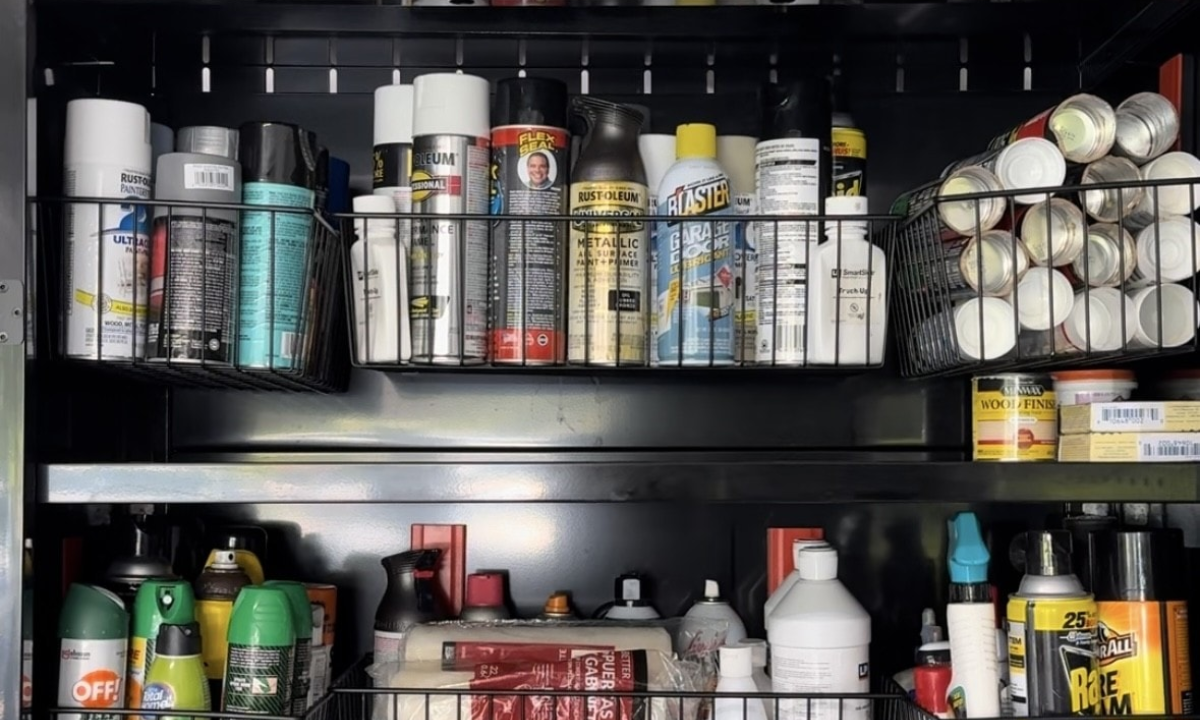








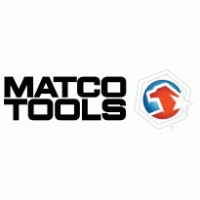


Leave a comment
This site is protected by hCaptcha and the hCaptcha Privacy Policy and Terms of Service apply.